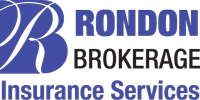In our ever-changing world, traditional insurance products sometimes struggle to keep up with the pace of risk. In response to these new challenges, a new type of insurance has emerged: parametric insurance. Let’s explore what it is, how it works, and its potential benefits through real-world examples.
What is parametric insurance?
Parametric insurance is a game-changer. Instead of focusing on actual damage or loss, it centers on the probability of a specific event occurring. Picture this: when a triggering event like a hurricane or earthquake happens, the insurer pays a predefined amount based on the severity of the event, not the actual damage incurred.
Why do we need it?
With climate change causing more frequent and unpredictable natural disasters, traditional insurance feels the pressure. Since 1980, the U.S. has faced a staggering total of 357 weather and climate disasters, costing over $2.565 trillion in damages. And these numbers are expected to rise as extreme weather becomes the new norm.
Example: Puerto Rico
Puerto Rico experienced firsthand the chaos caused by Hurricanes Irma and Maria in 2017. In response, they led Rule 103 in 2020, ushering in a new era of parametric microinsurance for low-income families. The objective was to reduce reliance on federal aid, provide affordable coverage, and strengthen resilience. Three years later, AON introduced a parametric insurance program tailored to Puerto Rico’s needs.
Benefits of parametric insurance
1. Fast and predictable payouts: Say goodbye to lengthy claims processes. Parametric insurance cuts the paperwork, delivering quick compensation once a triggering event surpasses a predefined threshold.
2. Customizable coverage: No more one-size-fits-all policies. With parametric insurance, you’re in control. Customize your coverage to fit your unique needs and risks, saving money and hassle.
3. Transparency: Say farewell to murky claims assessments. Parametric insurance relies on clear parameters, ensuring fairness and efficiency for both insurers and insured.
Example: Gulf States
Alabama, Louisiana, and parts of Florida have also ventured into parametric insurance. The insurer SwissRe led the charge, covering hurricane risks since 2010. These initiatives highlight the growing interest in parametric solutions to combat rising disaster risks.
What does this mean for New York?
While parametric insurance programs haven’t been implemented in New York yet, their growing popularity and success in other areas suggest they could be a valuable option for city residents.
Hypothetical example: Imagine you own a small business in New York and fear the damage a flood could cause. You opt for parametric insurance, guaranteeing quick and predictable compensation if the flood excedes the agreed threshold. If a disaster were to strike, just days after filing your claim, you receive swift and sufficient compensation to start necessary repairs and reopen your business as soon as possible. Thanks to your foresight and parametric insurance, you quickly recover from the disaster and resume serving your customers, minimizing your losses from business interruption.
In resume, parametric insurance represents an innovative tool to address the challenges of natural disasters in a constantly changing world. Its ability to provide fast, personalized, and transparent coverage makes it a compelling option for individuals and governments alike. As climate change continues to amplify these risks, embracing parametric insurance could be a wise decision to secure our future. As the threat of catastrophes increases, it’s important to consider adopting this type of insurance in the future in New York to protect its residents and promote community resilience.
At Rondon Brokerage, we’re committed to providing you with the best insurance options to meet your specific needs. If you have any inquiries related to parametric insurance, don’t hesitate to contact us.





